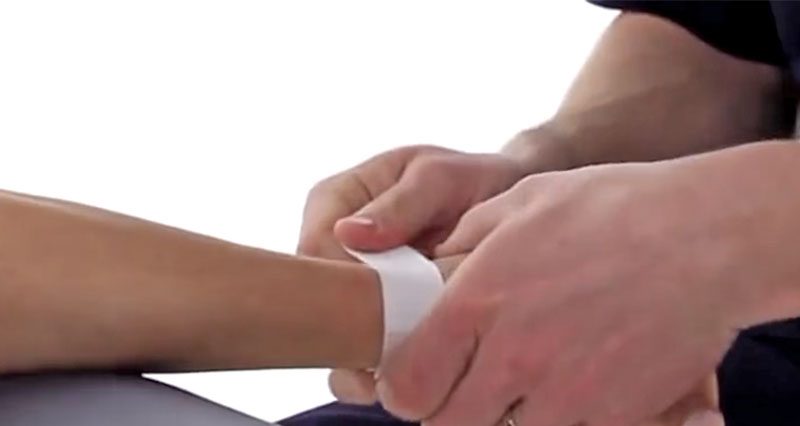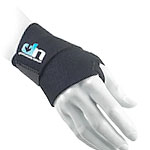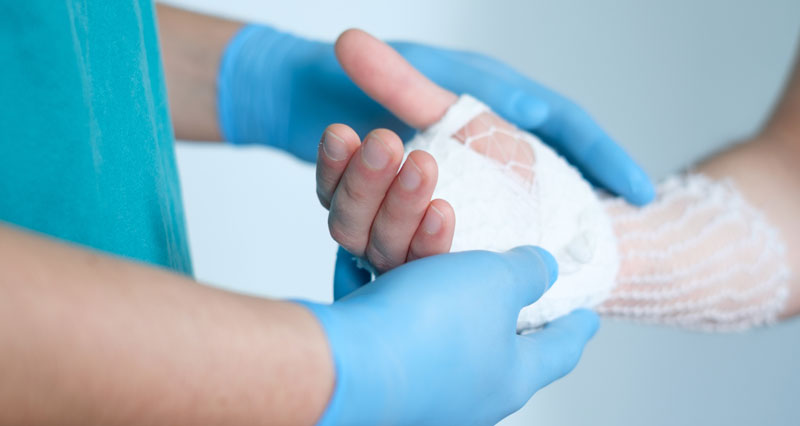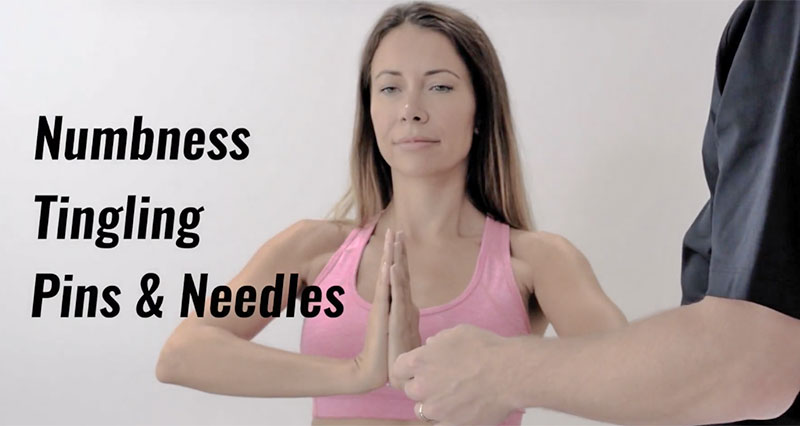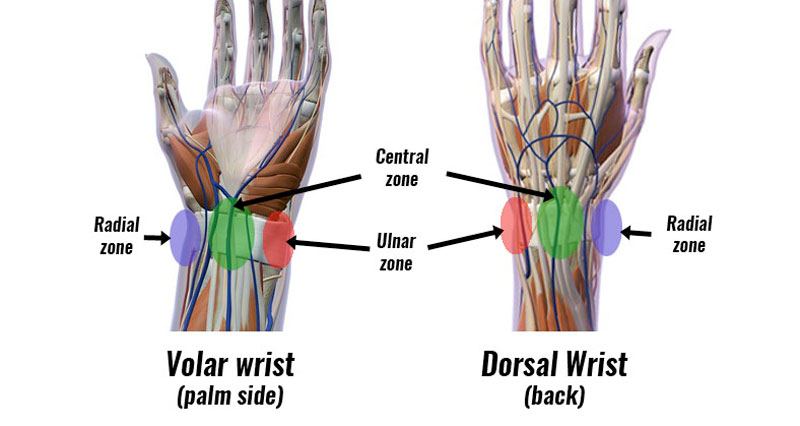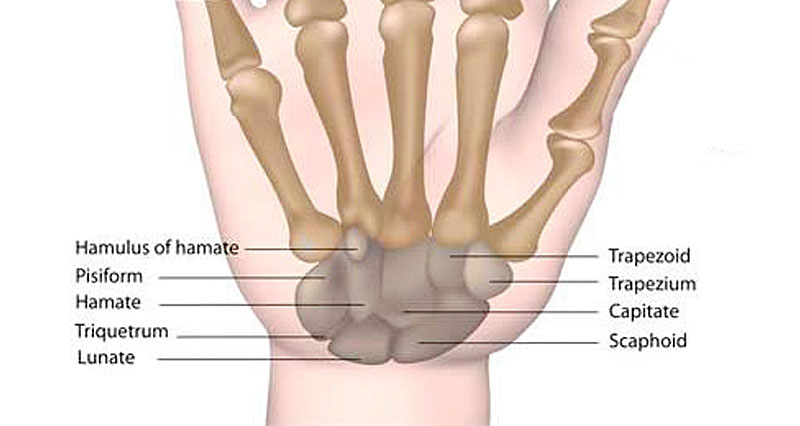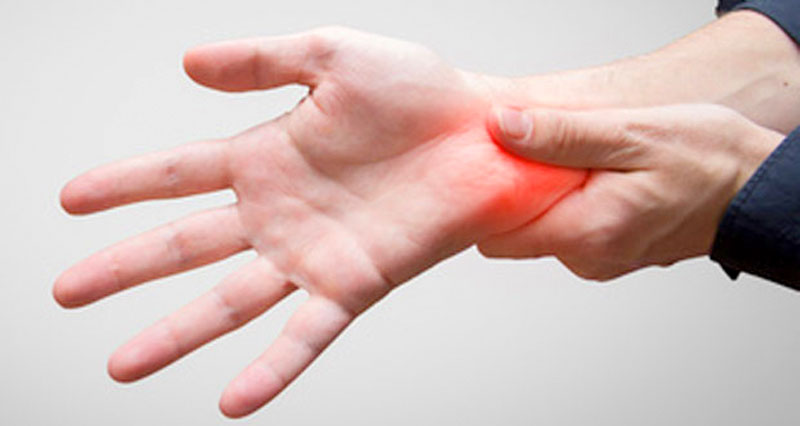Wrist taping or strapping is a great way to provide extra support when recovering from an injury. Or it is also used to help prevent wrist injuries. Here we explain the principles as well as how to tape the wrist.
If you have suffered a wrist injury then seek professional medical attention before attempting any self-treatment. This is especially true if you suspect a broken wrist. Always check for contraindications, for example being allergic to latex. Often the glue in sports tape contains latex.
Introduction to wrist taping
Exactly how to tape your wrist depends on your particular injury. This is why it is important to understand how your injury happened and which structures are damaged.
The aim of taping is to provide support and protection to the injured tissues. This is done by restricting or preventing movements which stress (or stretch) the injured ligaments or tendons.
For example, if you have bent your wrist too far back, you need to restrict that specific movement whilst the damaged tissues heal.
This is done by applying ‘anchor’ strips and ‘support’ strips. Anchor strips are applied directly to the skin, or underwrap if the area is particularly hairy. It is much better to apply tape to the skin if at all possible. Support strips are applied between the anchor strips and restrict movement.
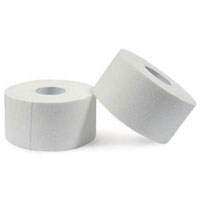
Zinc Ocide Sports Tape
Quick wrist taping
This wrist-taping technique is for general wrist pain or if you have a sprained wrist. It is quick and simple to apply.
Find the middle of your wrist. You have bony parts or protrusions on the outside with a softer ‘fleshy’ part in between.
Apply a strip of 2.5cm zinc oxide tape around the middle of your wrist.
Apply a little tension, but it is important not to make it too tight because you will restrict blood flow. If your hand appears swollen, goes blue, or you feel numbness, pins and needles then this is a sign it is too tight.
If you have applied just enough tension then the tape will restrict the movement of your wrist up and down, just enough to protect it.
